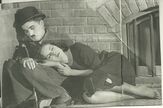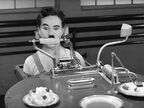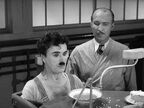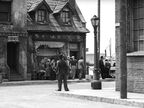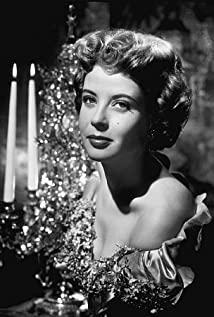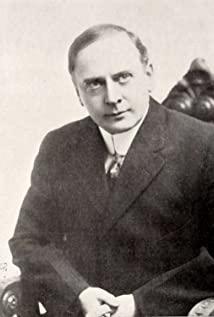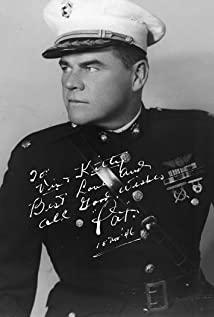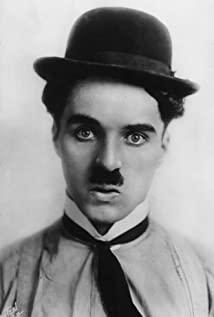After revisiting Chaplin's "Modern Times", I finally understood the dance at the end of the film, and the song "Nonsense Song (Titine) (From "Modern Times"). In Charles Chaplin Jr.'s "Remembering My Father Chaplin", it is mentioned that the reason why Chaplin sings at the end of the film is the same as Charlot's purpose, to try his voice and the effect in the film . That's something Chaplin had been worried about when the talkie era hit. The voice in the movie can attract the audience more than the performance of the body language in the silent film era, but Chaplin does not think so, so he uses the vocal but meaningless song, with the silent but rich body language, stubbornly expressing his love for the sound. The film's skepticism and uncompromising. Those who watch this song and dance are all forced to give up the meaning of the lyrics and are attracted by the exquisite and interesting dance. In the end, the audience will agree that the movements have explained everything, and the lyrics are no longer important. However, Chaplin also realized that audiences in the future would no longer be accustomed to silent films, so he composed music and even narration for his previous films, all for the purpose of deepening the actions, emotions and plots of the movie characters.
Taste, smell, touch and other sensory sensations are ubiquitous in movies, and they are all expressed visually, regardless of the often painful beating actions in comedy movies, the detailed actions caused by bad breath, the wet feeling soaked in water, the acid of lemon, The smell of wine, the smell of cheese that I don't like, smell of smelly socks, the smell of kitchen food in "A Lady in Paris"...all create a sense of space and reality in the plane vision. For "Modern Times", the most talked about is the social class nature of the film, the impact of the Industrial Revolution and the Great Depression on people at that time, but this is only part of the film, the homeless and homeless girls are constantly working, police stations, homeless Between the ups and downs, "survival" and "hope" all the plots that are close to a single complete coherence, they want to have a "home" and a good life, this is a theme that people all over the world can understand, in At the end of the film, the homeless girl can't help but ask: "What's the use of working hard?" After so many setbacks, she still has nothing. At this time, another theme in Chaplin's films emerged - fight, in "City Lights", "Finding a Son and Encountering Immortals", "Gold Rush", "The Great Dictator", "Circus", all wandering This theme runs through Han Charloh's stories, and Modern Times is no exception. In the end, Charlot did not forget to remind the girl to still smile and walk side by side on the symbolic avenue at dawn (you can have nothing but love), which naturally inspires the hearts of audiences all over the world, making people Tears in laughter.
View more about Modern Times reviews



